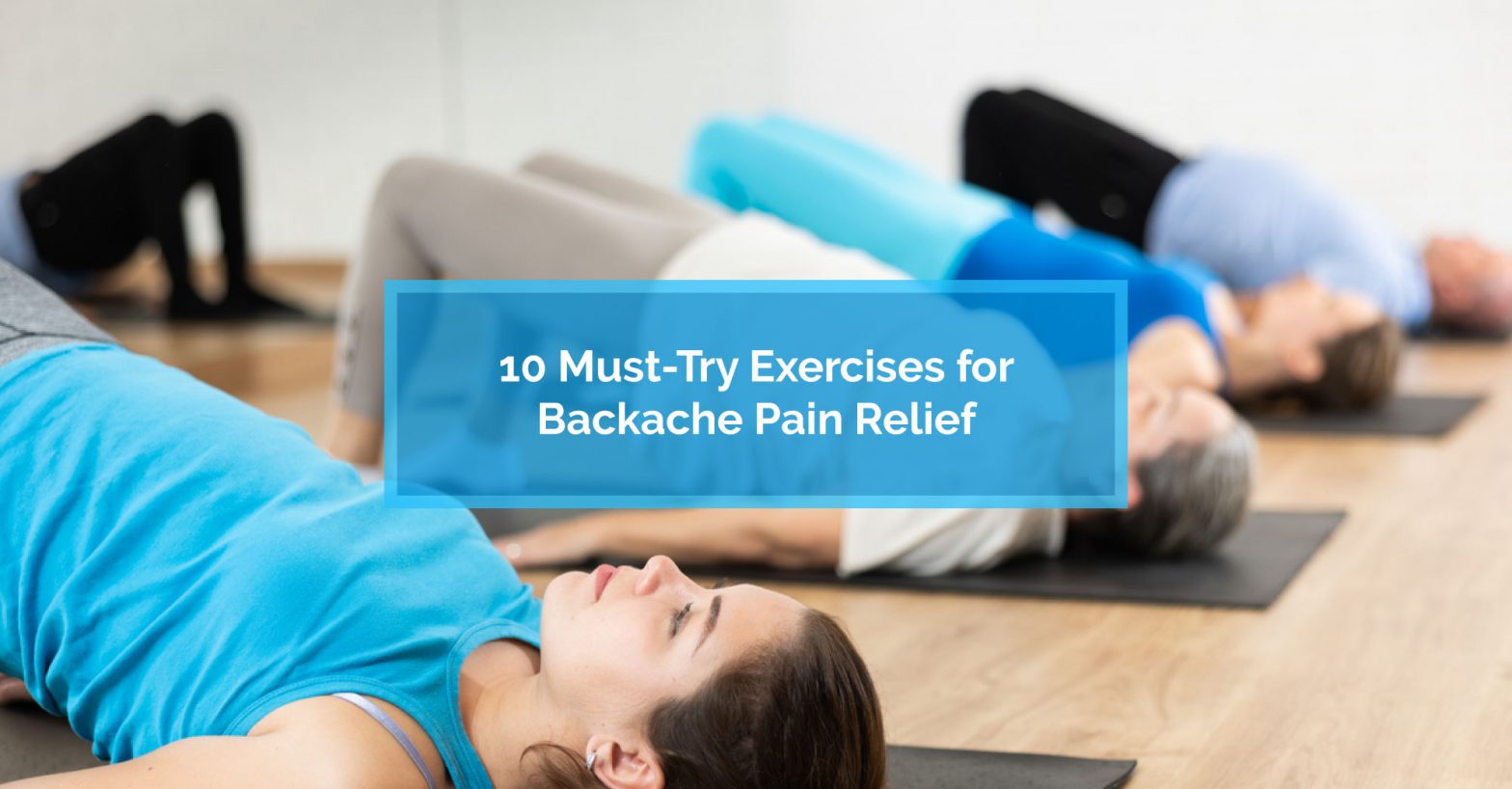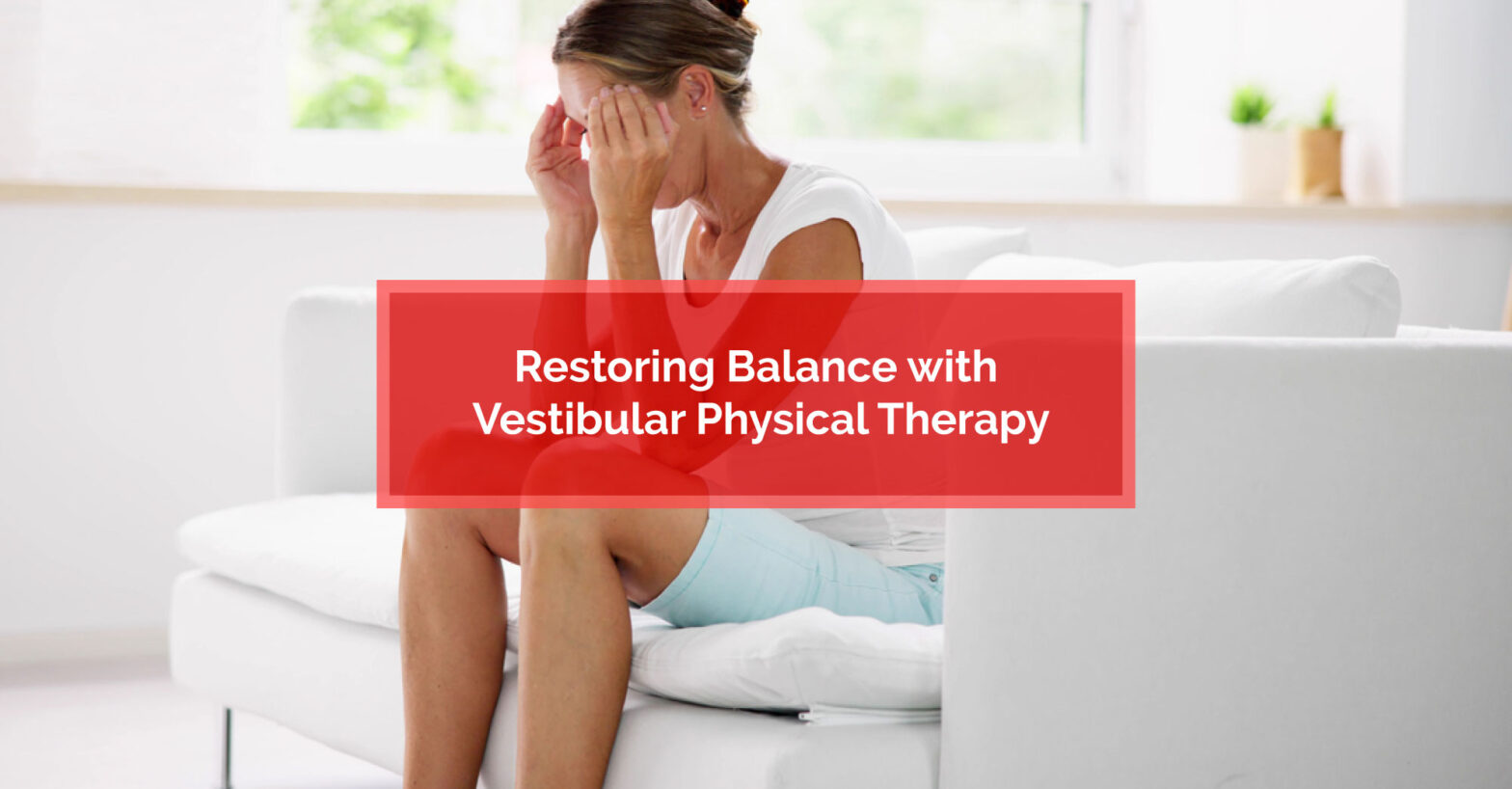Key Highlights:
- Backache pain is a common issue that can be relieved through specific exercises.
- Wall sits, pelvic tilts, bridging, knee-to-chest stretches, rotational stretches, cat-cow stretch, child’s pose, bird dog exercise, partial crunches, hamstring stretches are effective exercises.
- Poor posture and daily activities are common triggers of backache.
- Physiotherapy and chiropractic care can play a significant role in providing backache pain relief.
- Safety measures, consistency, and patience are key for preventing injury and achieve long-term backache pain relief.
Back pain is a common problem that affects people of all ages. It you’re suffering with back pain you know how it can significantly impact your daily experience and even your overall quality of life. Whether your condition is caused by muscle strain, poor posture, or a chronic condition, finding effective ways to providing backache pain relief is crucial for maintaining a healthy and active lifestyle. While medication can provide temporary relief, incorporating exercise into your regular routine can help to strengthen the muscles in your back and alleviate pain in the long term. In this article, we’ll explore 10 must-try exercises for backache pain relief, along with other options that can provide relief and improve your overall well-being.
10 Effective Exercises for Relieving Back Pain
Regular exercise can be a powerful tool in managing and reducing back pain. Here are 10 effective exercises that target your lower back and provide backache pain relief:
1. Wall Sits for Lower Back Strength
- Wall sits are a simple and effective exercise for strengthening your lower back muscles.
- Stand with your back against a wall and slide down into a sitting position, with your knees bent at a 90-degree angle.
- Hold this position for 30 seconds to 1 minute, keeping your back flat against the wall.
- Wall sits help improve lower back strength, increase blood flow to the area, and enhance the stability of your back muscles.
- It’s important to maintain proper form and avoid straining your back while performing wall sits. Start with shorter durations and gradually increase the time as your muscles become stronger.
2. Pelvic Tilts to Ease Lumbar Tension
- Pelvic tilts are a gentle exercise that helps ease lumbar tension and strengthens your abdominal muscles.
- To perform pelvic tilts, lie on your back with your knees bent and feet flat on the floor.
- Slowly tilt your pelvis forward, flattening your lower back against the floor.
- Hold this position for a few seconds and then tilt your pelvis backward, arching your lower back slightly.
- Repeat this movement for 10-15 repetitions, focusing on engaging your abdominal muscles.
- Pelvic tilts help improve the flexibility and stability of your lower back, reducing tension and promoting better posture.
3. Bridging for Core and Lower Back Support
- Bridging is a core exercise that targets your glutes, hamstrings, and lower back muscles.
- Lie on your back with your knees bent and feet flat on the floor, hip-width apart.
- Slowly lift your hips off the floor, engaging your glutes and core muscles.
- Hold this position for a few seconds and then lower your hips back down.
- Repeat this movement for 10-15 repetitions, focusing on maintaining a straight line from your shoulders to your knees.
- Bridging helps strengthen your core and lower back muscles, improving stability and providing support for your spine.
4. Knee-to-Chest Stretches for Flexibility
- Knee-to-chest stretches are a simple yet effective exercise for improving flexibility and relieving tension in your lower back.
- Lie on your back with your legs extended.
- Slowly bring one knee towards your chest, using your hands to gently pull it closer.
- Hold this position for 15-30 seconds and then release.
- Repeat on the other side, alternating between your left and right legs.
- Knee-to-chest stretches help stretch the muscles and soft tissues in your lower back, improving flexibility and relieving pressure on your spine.
5. Lower Back Rotational Stretches for Mobility
- Lower back rotational stretches are beneficial for improving mobility and relieving tension in your back muscles.
- Lie on your back with your knees bent and feet flat on the floor.
- Gently rotate your knees to one side, keeping your shoulders flat on the floor.
- Hold this position for 15-30 seconds and then return to the starting position.
- Repeat on the other side, alternating between left and right.
- Lower back rotational stretches help improve the flexibility of your back muscles, increase your range of motion, and reduce stiffness.
6. Cat-Cow Stretch for Spine Flexibility
- The cat-cow stretch is a yoga pose that promotes spine flexibility and muscle relaxation in your back.
- Start on your hands and knees, with your hands directly beneath your shoulders and your knees hip-width apart.
- Inhale and arch your back, lifting your chest and tailbone towards the ceiling while dropping your belly towards the floor (cow pose).
- Exhale and round your back, tucking your chin towards your chest and drawing your belly button towards your spine (cat pose).
- Repeat this movement for 5-10 repetitions, focusing on the fluidity of your spine.
- The cat-cow stretch improves spine flexibility, relieves tension in your back muscles, and promotes relaxation.
7. Child’s Pose for Relaxation and Stretching
- Child’s pose is a restorative yoga pose that promotes relaxation and gentle stretching of your lower back.
- Start on your hands and knees, then sit back on your heels, bringing your forehead to the floor.
- Extend your arms forward or rest them by your sides, whichever is more comfortable.
- Hold this position for 30 seconds to several minutes, focusing on deep breathing and releasing tension.
- Child’s pose helps relax the muscles in your lower back, hips, and buttocks, providing a gentle stretch and promoting relaxation.
8. Bird Dog Exercise for Stability
- The bird dog exercise is a core stability exercise that targets the muscles in your back and abdomen.
- Start on your hands and knees, with your hands directly beneath your shoulders and your knees hip-width apart.
- Slowly extend your right arm forward and your left leg back, maintaining a straight line from your fingertips to your toes.
- Hold this position for a few seconds and then return to the starting position.
- Repeat on the other side, alternating between left and right.
- The bird dog exercise improves your core stability, strengthens your back and abdominal muscles, and improves your overall posture.
9. Partial Crunches for Core Strengthening
- Partial crunches are an effective exercise for strengthening your core and abdominal muscles.
- Lie on your back with your knees bent and feet flat on the floor, hip-width apart.
- Place your hands behind your head, keeping your elbows wide.
- Slowly lift your shoulders off the floor, engaging your abdominal muscles.
- Hold this position for a few seconds and then lower your shoulders back down.
- Repeat this movement for 10-15 repetitions, focusing on maintaining proper form and breathing throughout.
- Partial crunches strengthen your core muscles, improve stability, and provide support for your lower back.
10. Hamstring Stretches for Tight Muscles
- Hamstring stretches can help relieve tightness in the muscles at the back of your thighs, which can contribute to lower back pain.
- Sit on the floor with one leg extended and the other leg bent, with your foot resting against the inner thigh of your extended leg.
- Slowly lean forward, reaching towards the toes on your extended leg.
- Hold this position for 15-30 seconds and then switch legs.
- Repeat on each leg, alternating between left and right.
- Hamstring stretches lengthen and relax the muscles in the back of your thighs, reducing tension and promoting better posture.
Understanding Back Pain and Its Causes
Back pain is a common condition that can have significant quality of life impacts. Chronic low back pain is a persistent condition that lasts for more than three months and can be caused by a variety of factors. One common cause is poor posture, which puts strain on the muscles and structures of the back. Other causes of back pain include muscle strains, herniated discs, spinal stenosis, and arthritis.
Common Triggers of Backache
Back pain can be triggered by a variety of factors, including poor posture and daily activities. Poor posture, such as slouching or hunching over, can put strain on the muscles and ligaments of your back, leading to pain and discomfort. Daily activities that involve heavy lifting, repetitive motions, or prolonged sitting or standing can also contribute to back pain. Making small adjustments to your daily routine and incorporating exercise and stretching can help prevent back pain and promote overall spinal health.
How Poor Posture Contributes to Back Pain
Poor posture can place excessive strain on the muscles, ligaments, and discs of your spine. When your spine is not properly aligned, it can lead to muscle imbalances and tension, which can result in pain and discomfort. Over time, poor posture can lead to muscle spasms, increased pressure on the discs, and increased wear and tear on the structures of your back.
Physiotherapy and Chiropractic Care for Back Pain Relief
Physiotherapy plays a crucial role in treating back pain by focusing on restoring mobility and function. It involves manual therapy, tailored exercises, and stretches to alleviate discomfort. Alternatively, chiropractic adjustments help manage pain by aligning the spine and addressing issues related to musculoskeletal alignment. Both disciplines offer holistic approaches to backache pain relief, aiming to enhance overall well-being and functionality.
The Role of Physiotherapy in Treating Back Pain
Physiotherapy plays an important role in treating back pain by targeting root causes through manual therapy and tailored exercises. Your physiotherapist will assess your condition, design a personalized treatment plan that includes strengthening back muscles, improving flexibility, and correcting posture. The objective of this hands-on approach is to reduce pain, enhance mobility, improve your overall quality of life and prevent future incidences.
How Chiropractic Adjustments Help in Pain Management
Chiropractic adjustments play a crucial role in managing back pain by realigning the spine, which can alleviate pressure on nerves and reduce pain. Through manual manipulations, chiropractors aim to improve spinal function, decrease inflammation, and enhance overall physical function. These adjustments can also promote natural healing within your body, providing a non-invasive approach to providing backache pain relief for those seeking alternative treatments for chronic back pain.
Conclusion
In conclusion, incorporating these 10 effective exercises into your routine can significantly help to strengthen your core and lower back muscles, and provide backache pain relief. Understanding the causes of back pain, such as poor posture and muscle tightness, is crucial in preventing further discomfort. Consider seeking professional help from physiotherapy or chiropractic care for personalized back pain relief strategies. Remember, it’s important to consult with a healthcare professional before starting a new exercise regimen. Your journey to a healthier back starts with taking proactive steps today.
If you or someone you know is in need of backache pain relief, we can help. Contact us today and let us show you why, at Physiomed…Healthier Starts Here.
Frequently Asked Questions About Backache Pain Relief:
What Are the Best Practices for Preventing Back Pain?
To prevent back pain, maintain good posture, incorporate regular exercise for strength and flexibility, use ergonomically designed furniture, lift heavy objects correctly, and avoid prolonged sitting. Staying hydrated, managing stress, and ensuring proper sleep quality also helps.
How Often Should I Perform These Exercises?
Perform these exercises 2-3 times a week, allowing rest days in between for muscle recovery. Listen to your body; increasing gradually as your strength and flexibility improve. Remember, consistency is key for success.
Can Physiotherapy and Chiropractic Care Cure Back Pain Completely?
While Physiotherapy and chiropractic care can provide effective backache pain relief, a complete cure depends on various factors including the underlying cause and how you respond. Of course, integrating these treatments into your approach can have a significant impact.






